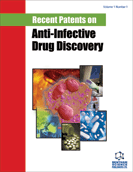Abstract
In spite of the improvements in transfusion safety occurred in the last decades, platelet septic transfusions still represent a cause for concern. Microbial screening of blood products cannot ensure transfusion sterility, so that pathogen inactivation methods and a timely management of infectious events actually play the most relevant role. Biofilm production has been associated to several human illnesses; also, it promotes bacterial adherence to platelet bags and colonization of recipients catheter after transfusion. Therefore, facing biofilm communities is required to reduce the contamination risk and the occurrence of post-infusion events. In this context, the use of tigecycline as a wide-spectrum antibiofilm drug is discussed, along with recent patents about biofilm treatment by quorum-sensing blockers, bacteriophage-based therapy and antibiofilm oral compounds.
Keywords: Transfusion, platelet, biofilm, bacteremia, sepsis, septicaemia, tigecycline, glycylglycine
 9
9





















